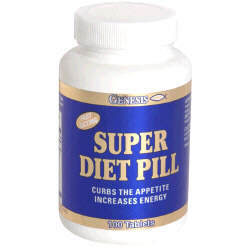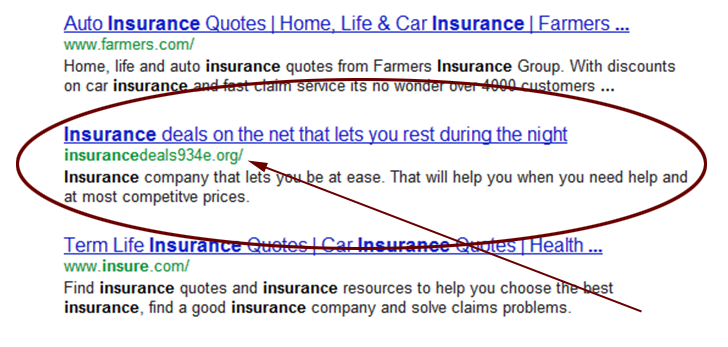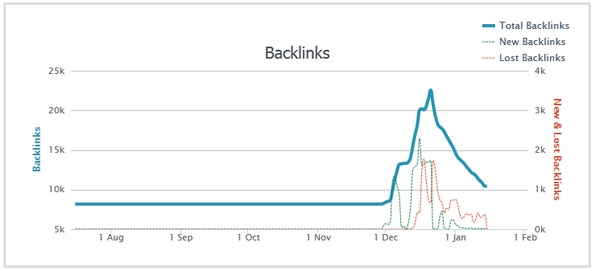I’ve been doing SEO for a while, not since the stone-age of SEO, but as far back to remember when you could so easily game the system. That is now a lost world.
 In the not so distant past SEO’s could offer their clients a the equivalent of a diet pill. No need to spend hours on the treadmill, just take this fairly expensive pill and you will become more attractive to your suitor (Google).
In the not so distant past SEO’s could offer their clients a the equivalent of a diet pill. No need to spend hours on the treadmill, just take this fairly expensive pill and you will become more attractive to your suitor (Google).
Last year, Google finally put their algorithm where there mouth is. In the past, Google has averted their gaze from “low quality” sites. They discounted many of their tactics, but an aggressive site owner who is driven to rank can make it up in volume. Thousands of inbound links based around highly sought after anchor text could overwhelm more conservative sites that played by the rules. White hat SEO consultants would advise their clients to take the high road and follow the Google webmaster guidelines, but their sites seemed to float around on page 2 or 3 of the search results.
As the 2 monochromatic animals of the SEO apocalypse rode through the SERPs a change took place, and mostly for the good. Sites that had looked good only by subsisting on super diet pills started to lose their attractiveness. The sites that had spent their time on the treadmill started ranking.
A search for a fairly generic term like “insurance” now rarely shows a weird result like the one below (which was on page 2 when I grabbed this screenshot).

This listing is no longer on page 2, but at one point it had in excess of 20,000 backlinks pointing at it. Many of the backlinks were from foreign domains (.ru, .ua, .pl etc.) but it was enough to push them into the space that is normally reserved for the giant insurance brands.

Their backlink graph looks like a Everest in Kansas. This site might as well camped out on the front lawn of the Googleplex flying a pirate flag and dancing around a fire pit.
The New Face of SEO
We still need to talk to site owners and explain the benefit of high-quality, relevant backlinks because they are still a major force in the core algorithm but there is so much more to it now. How are you planning on building links, where, when, what will they point to?
Links to the homepage
If you are getting sites linking to your homepage, chances are it will be a branded link. For example, if I mention my favorite restaurant is The Pit in downtown Raleigh, I use their name and link to their root domain like any normal person. If I want to link to an interesting video I ran across on the Cisco website about the basics of data protection I’ll probably link directly to the interior page with a more descriptive anchor text.
When I look at the link profile for a site and see a lot of highly sought after anchor text pointing at the homepage I immediately get suspicious. So that begs the question, how does a site get highly optimized links for their site? The answer is easy to say, but hard to do.
Content is your only hope
If you want to rank for a term like “data protection” you need to start creating content around that idea that is worthy of links! I know, you’re rolling your eyes because it’s like your doctor telling you if you lose 10 pounds you’ll feel better.
Go look at a site that ranks well for some term that you’re not specifically knowledgeable about. I’ll use a competitive term: “small business phone systems“. After the ads I see Panasonic at the #1 position. When I click-through I see an entire page about best practices when choosing a business phone system that comes complete with case studies. The page itself has 26 backlinks from 7 unique domains and needless to say the Panasonic domain is a super trusted and authoritative domain.
Panasonic has people (or an agency) to generate great content for their site. They will continue to rank well for that term because of it.
There’s nothing exciting about my product
This is the knee-jerk response by someone who is intimidated by the thought of being forced into a creative role. There are thousands of sites out there that are doing great things around products that often seem ho-hum. My favorite is Best Made Company and their axes.

Best Made Company takes the time to tell their story about why you should consider yourself happy to fork over $158 for an axe. They have an interview with the axe designer and even footage of the axe being used in a snowy forest chopping down a tree. It’s great content from a company who is all about the content and telling a story.
If you’re not a story-teller you need to set aside some time and figure out how you’re going to convince people that your product is worth them considering. The average American no longer actually “needs” what you’re selling, they have everything the need and a $99/month storage room full of shiny stuff they thought they wanted.
Find your internal storyteller. If there’s no answer, find someone who can help you. Crafting your story is job one.
If you’re unsure where to start, ask questions. Start by talking to your best customers. Ask them why they buy from you. Ask old customers why the left. Ask strangers to talk about problems they’re having that you might be able to address with your product or service. After a couple of weeks, your story will start to take form.
I’m a commodity
If you sell something where you think the only way to more sales is to compete on lowest price, you can stop reading. Racing to be the low price leader is only going to work for one person. There are a lot of products that probably feel like their a commodity, like paper towels. Yet there are paper towels that sell for less than a dollar a roll and linen based paper towels that cost a fortune.
The biggest problem when you race to the bottom is that you lose the drive to make something great, because all your focus is on making it cheaper.
My friend runs a site at cheappens.com. You can probably guess what she sells… right. The new world order is not a friendly regime for her site. Yes she offers a nice variety of inexpensive pens. She has great promotional items and everything your expect. The problem comes from the site needing to be different/remarkable/noticeable. How do you take the $0.19 pen and build a community around it. Who will become your evangelist? There’s the rub. It’s a transactional purchase of a true commodity. If the site went dark tomorrow, there would be someone else selling the same pens at about the same price and the customers wouldn’t care. It’s the same thing that would happen if your local Mobil gas station becomes a Sunoco station.
I would say that Lynne’s best hope is that SHE has to become the brand evangelist. She needs to be the artist in residence at cheappens.com and make people’s dreams come true when they need 300 pens for the trade show next month.
I’d love to hear what you’ve found over the 18 months with your website.








